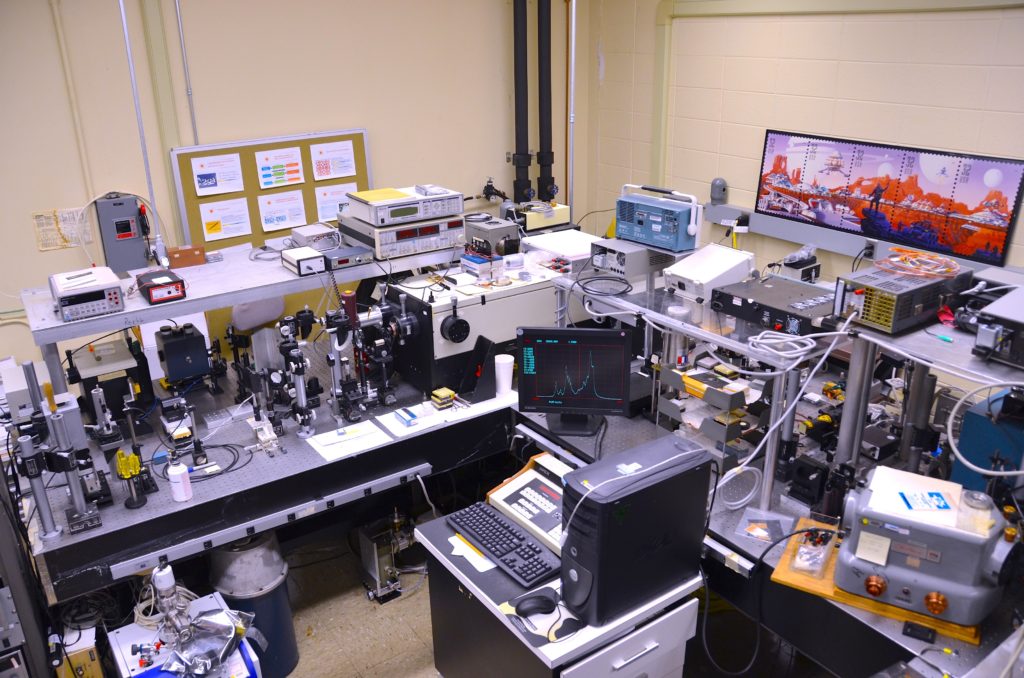 The Laser Remote Sensing Branch (LRSB) at NASA Langley has an extensive spectroscopic facility where basic parameters of solid state laser materials can be measured. It is extremely difficult to assess the potential of a solid state laser by means of laser tests alone. This is especially true when more than one active atom is incorporated into a laser material. To obviate this difficulty, NASA Langley performs sophisticated and detailed spectroscopic measurements on solid state laser materials. Parameters measured include: absorption coefficients, lifetimes, emission cross sections, energy transfer parameters, and branching ratios. Using these basic parameters in sophisticated laser models, the performance of solid state lasers can be predicted. Laser models have been developed at NASA Langley as well as elsewhere for this purpose. Predicted performance can then be compared with experiments to produce a comprehensive understanding of the laser.
The Laser Remote Sensing Branch (LRSB) at NASA Langley has an extensive spectroscopic facility where basic parameters of solid state laser materials can be measured. It is extremely difficult to assess the potential of a solid state laser by means of laser tests alone. This is especially true when more than one active atom is incorporated into a laser material. To obviate this difficulty, NASA Langley performs sophisticated and detailed spectroscopic measurements on solid state laser materials. Parameters measured include: absorption coefficients, lifetimes, emission cross sections, energy transfer parameters, and branching ratios. Using these basic parameters in sophisticated laser models, the performance of solid state lasers can be predicted. Laser models have been developed at NASA Langley as well as elsewhere for this purpose. Predicted performance can then be compared with experiments to produce a comprehensive understanding of the laser.
NASA Langley has a variety of spectroscopic equipment and laser sources with which the laser materials can be measured. Absorption measurements can be done either on a Perkin Elmer Lambda 900 or a Cary 5-E spectrophotometer in the UV/Vis/NIR in addition to a Perkin Elmer Frontier Optica FT-IR for measurements from the NIR to FIR. Emission spectra can be recorded by using a wide variety of available excitation sources, collecting the fluorescence using a 1.25 m SPEX monochromator, detecting it using a variety of cooled detector and amplifier combinations, and recording it on a dedicated computer. NASA Langley personnel wrote a step and stare routine for operating the monochromator and averaging the signal as well as other data analysis software. Samples can also be cooled using refrigerators which reach cryogenic temperatures. Energy transfer parameters can be measured using a VIBRANT (HE) 355 II OPO laser source, tunable from 410 – 2400 nm, and fast detector and amplifier combinations. Energy transfer parameters can be deduced by curve fitting the rise and fall of the fluorescence based on the physics of the processes.